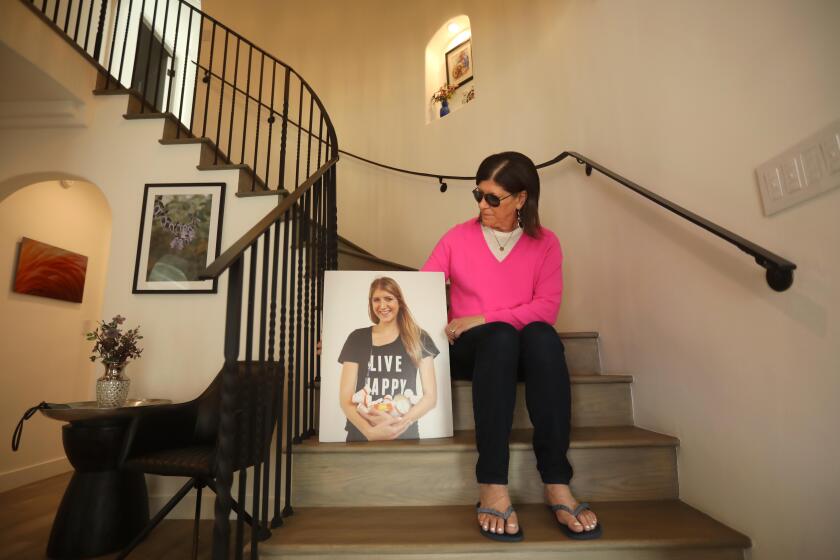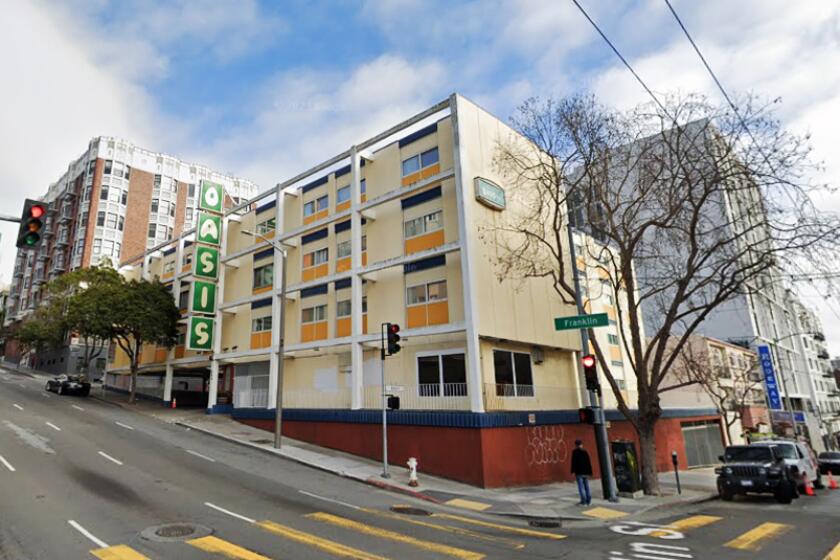U.S. High Court Orders Review of Murder Case : Ruling: State justices are told to reconsider the conviction of a man on Death Row for killing a 10-year-old girl in 1982. He was not read his rights until 30 minutes after police picked him up.
In a slap at California’s high court, the U.S. Supreme Court told the state justices Tuesday to reconsider the case of a convicted Pomona child murderer who was questioned by police in 1982 before he was given the Miranda warnings.
The ruling, although a setback for the state, gives prosecutors and state judges a second chance to explain why Robert Stansbury was not “in custody” after four armed police officers came to his home at 11 p.m. and took him to the jailhouse for questioning.
On that September night 12 years ago, Los Angeles county homicide investigators were looking for the killer of a 10-year-old Baldwin Park girl who had been abducted the day before from her neighborhood. Her body was found in Pasadena after a man walking his dog saw a large turquoise car come to a stop and its tall driver throw something heavy from the trunk.
Police soon learned that two ice cream truck drivers were seen in the Baldwin Park area talking to young children. One of them was Stansbury. But based on a child’s comment, police thought the other driver was the prime suspect.
Police quickly tracked down both suspects and brought them to the station for questioning. But they failed to warn Stansbury of his right to remain silent or to offer the aid of a lawyer during the first 30 minutes of interrogation.
After a long, grueling trial in Pomona, Stansbury was convicted of the girl’s murder, in part based on his statements made during the first 30 minutes of questioning by police.
Since the Miranda vs. Arizona decision of 1966, the high court has said repeatedly that when a suspect is taken “in custody” for questioning, police must first warn him of these rights. In follow-up rulings, the court has said that a suspect is in custody when police have him under control and a “reasonable man in the suspect’s shoes” would not feel “free to leave.”
Nonetheless, the California Supreme Court upheld Stansbury’s conviction and death sentence last year and rejected his Miranda claim on the grounds that homicide investigators had not “focused suspicion” on him as their prime suspect when they picked him up for questioning. In a brief, unanimous opinion Tuesday, the justices said that this “analysis conflicts with our opinions. . . . Our cases make clear, in no uncertain terms, that any inquiry into whether the officers have focused their suspicions upon the individual being questioned . . . is not relevant for purposes of Miranda.”
Simply put, the high court said that judges should look at what the police did, not what they were thinking.
Rarely does the Supreme Court under Chief Justice William H. Rehnquist reverse a criminal conviction based on a procedural violation. But during the oral argument last month, it was clear that most of the justices were upset by the legal standard adopted by the California courts.
Still, they stopped short of reversing the conviction outright and ordering a new trial. Instead, their ruling in the case (Stansbury vs. California, 93-5770) orders the state high court to restudy the case based on “the objective facts” of what took place on the night of Sept. 29, 1982.
Attorneys in the case disagreed on the likely outcome.
San Francisco attorney Robert M. Westberg, who represents Stansbury, said that the “totality of the facts certainly indicate this person was in custody.” He contended that any reasonable person would think he was in custody if picked up late at night by four armed police officers.
But Deputy Atty. Gen. Aileen Bunney said Stansbury “consented” to come in for questioning.
“I believe they (state judges) will look at the objective facts and the result will be the same,” she said.
State Deputy Atty. Gen. Dane Gillette, who coordinates death penalty cases, insisted that Stansbury’s conviction and death sentence will be upheld even with a stricter standard for Miranda rights. Tuesday’s ruling, he said, contains “no implication that the end result is incorrect. It simply says there is a need to review the criteria.”
Richard D. Burns, the deputy district attorney who prosecuted Stansbury, expressed confidence that the initial interrogation will be proven to have met the Miranda requirements. The ruling, he said, will turn out to be “much ado about nothing.”
If the police officers’ unspoken frame of mind can not be included in a decision about whether Stansbury was considered a suspect right away, then their treatment of him will show Stansbury did not merit an immediate reading of his rights, Burns added.
Police in 1982 asked Stansbury if he wanted to drive himself to the station and, when he declined, he was given a front seat in the police car. “He was not patted down, not handcuffed. He was put in the front seat next to the officers’ weapons. This is not generally the manner you are transported if police suspect you have recently been involved in a murder case,” Burns said.
Even if the state Supreme Court now concludes that police erred by not giving Stansbury his Miranda warnings, they can still rule that the mistake was a “harmless error.” Prosecutors could argue that his initial admissions during questioning did not affect the jury’s final ruling. If so, the court could still uphold his conviction and death sentence.
Times staff writer Larry Gordon contributed to this story from Los Angeles.
More to Read
Start your day right
Sign up for Essential California for news, features and recommendations from the L.A. Times and beyond in your inbox six days a week.
You may occasionally receive promotional content from the Los Angeles Times.







